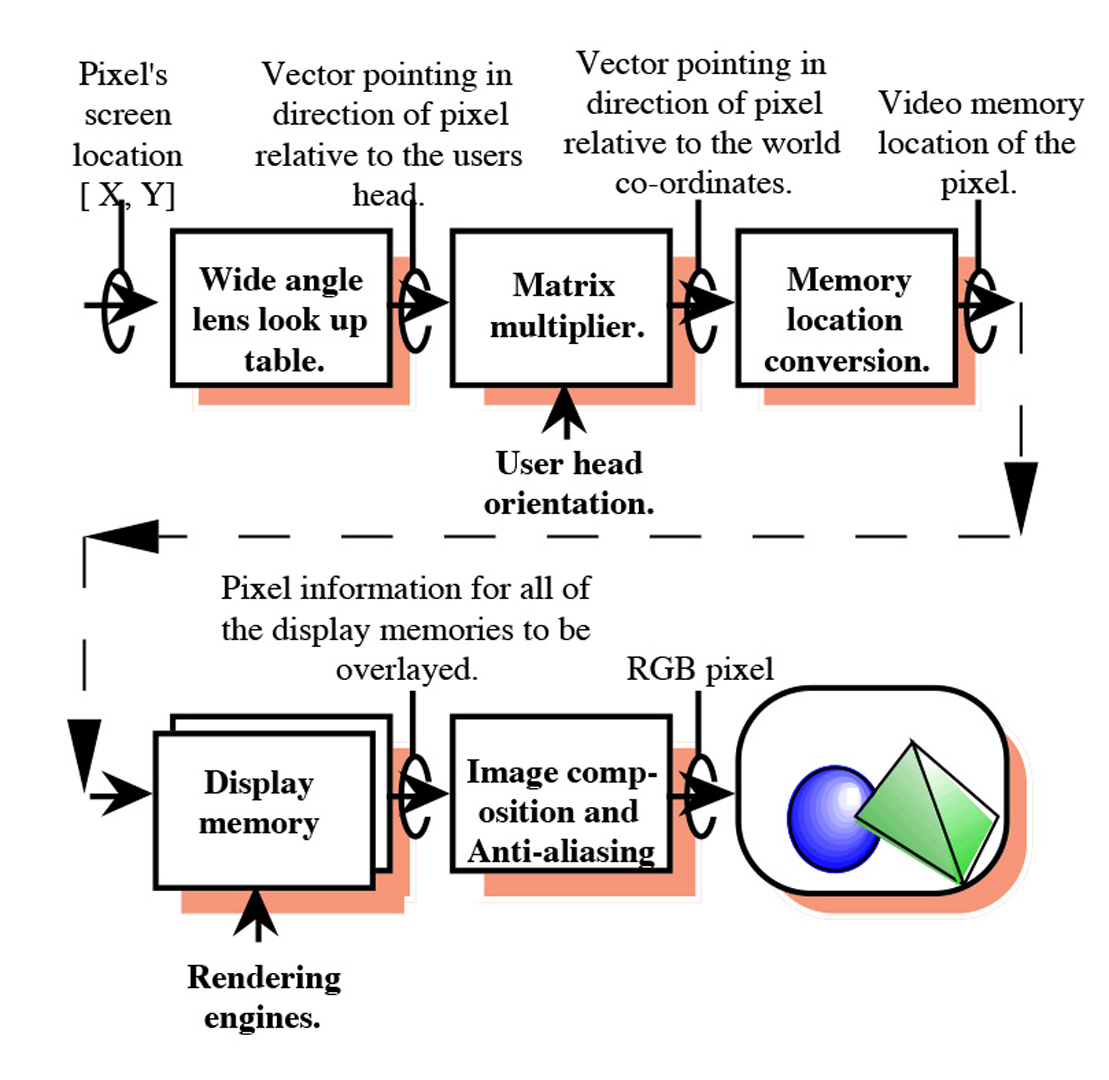“Priority rendering with a virtual reality address recalculation pipeline” by Regan and Pose
Conference:
Type(s):
Title:
- Priority rendering with a virtual reality address recalculation pipeline
Presenter(s)/Author(s):
Abstract:
Virtual reality systems are placing never before seen demands on computer graphics hardware, yet few graphics systems are designed specifically for virtural reality. An address recalculation pipeline is a graphics display controller specifically designed for use with head mounted virtual reality systems, it performs orientation viewport mapping after rendering which means the users head orientation does not need to be known accurately until less than a microsecond before the first pixel of an update frame is actually sent to the head mounted display device. As a result the user perceived latency to head rotations is minimal.Using such a controller with image composition it is possible to render different objects within the world at different rate, thus it is possible to concentrate the available rendering power on the sections of the scene that change the most. The concentration of rendering power is known as priority rendering. Reductions of one order of magnitude in the number of objects rendered for an entire scene have been observed when using priority rendering. When non interactive background scenes which are rendered with a high quality rendering algorithm such as ray tracing are added to the world, highly realistic virtual worlds are possible with little or no latency.
References:
1. Akeley, Kurt. Reality Engine Graphics, Proceedings of SIGGRAPH 93. In Computer Graphics, Annual Conference Series 1993. 109-116.
2. Catmull, Ed. and Smith, Alvy. 3-D Transformations of Images in Scanline Order. Proceedings of SIGGRAPH 80. In Computer Graphics, Annual Conference Series 1980. 279-285.
3. Deering, Michael. High Resolution Virtual Reality, Proceedings of SIGGRAPH 92 In Computer Graphics, Annual Conference Series 1992. 195-202.
4. Fuchs, Henry. et al. Pixel-Planes 5: A Heterogeneous Multiprocessor Graphics System Using Processor Enhanced Memories. Proceedings of SIGGRAPH 89. In Computer Graphics, Annual Conference Series 1989. 79-88.
5. Hettinger, Lawrence and Riccio, Gary. Visually Induced Motion Sickness in Virtual Reality Systems: Implications for training and Mission Rehearsal, Presented at a DoD sponsored Inter agency Tech Simulation, 1-3 Oct, 1991.
6. Lipton, L. Temporal Artefacts in Field-Sequential Stereoscopic Displays. Proceedings of SID ’91 (Anaheim, California, May 6-10, 1991). In Proceedings of the SID 22 (May 1991), 834-835.
7. Molnar, Steven, Image Composition Architectures for Real-Time image Generation. Ph.D dissertation, University of North Carolina, 1991.
8. Molnar, Steven and Fuchs, Henry. Advanced Raster Graphics Architectures. Chapter 18, Computer Graphics, Foley and VanDam, 872-873.
9. Regan, Matthew and Pose, Ronald. A Low Latency Virtual Reality Display System. Tech Report 166, Department of Computer Science, Monash University . September 1992.
10. Regan, Matthew and Pose, Ronald. An Interactive Graphics Display Architecture. Proceedings of IEEE Virtual Reality Annual International Synposium. (18-22 September 1993, Seattle USA), 293-299.
11. Robinett, Warren and Roland, Jannack. A Computational Model for the Stereoscopic Optics for Head Mounted Display. In Presence 1, (winter 1992), 45-62.
12. Smith, Alvy. Planar 2-Pass Texture Mapping and Warping. Proceedings of SIGGRAPH 87. In Computer Graphics, Annual Conference Series 1987. 263-272.





